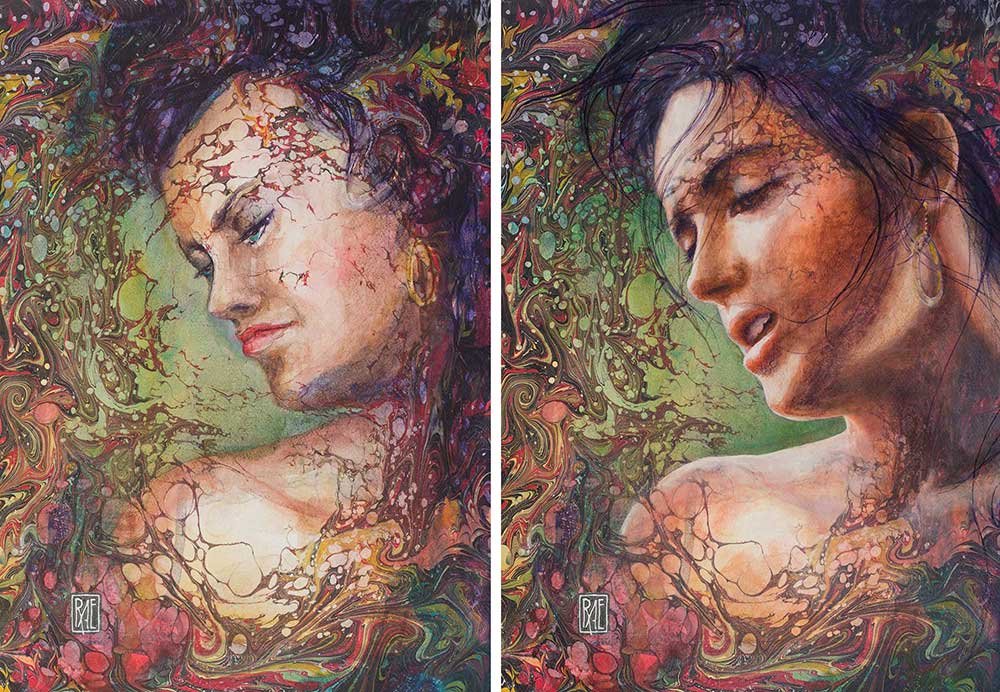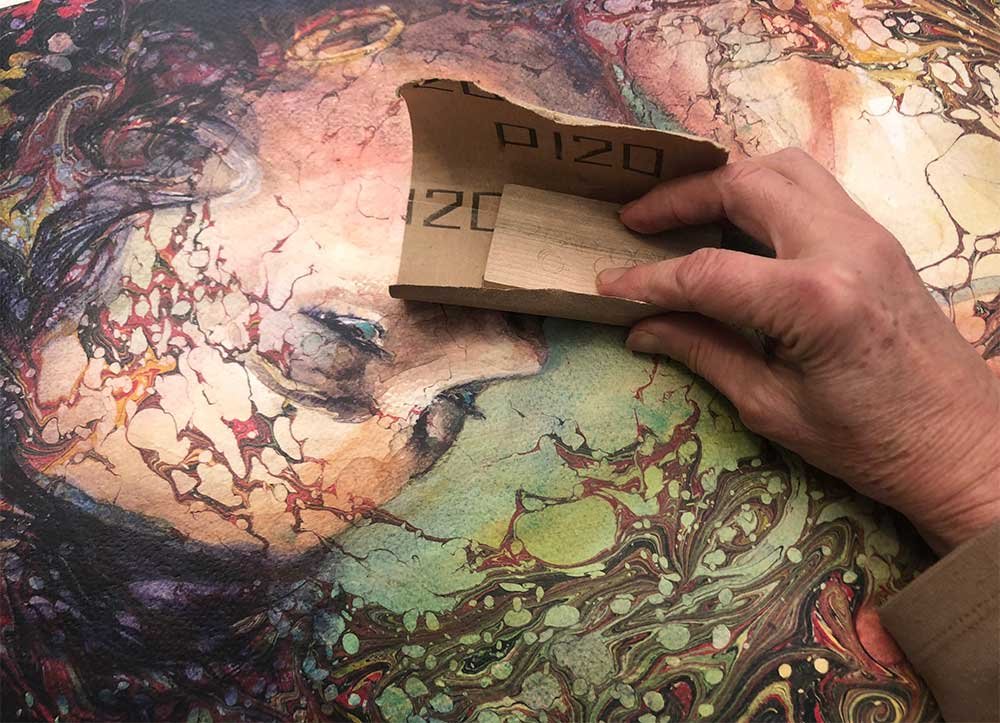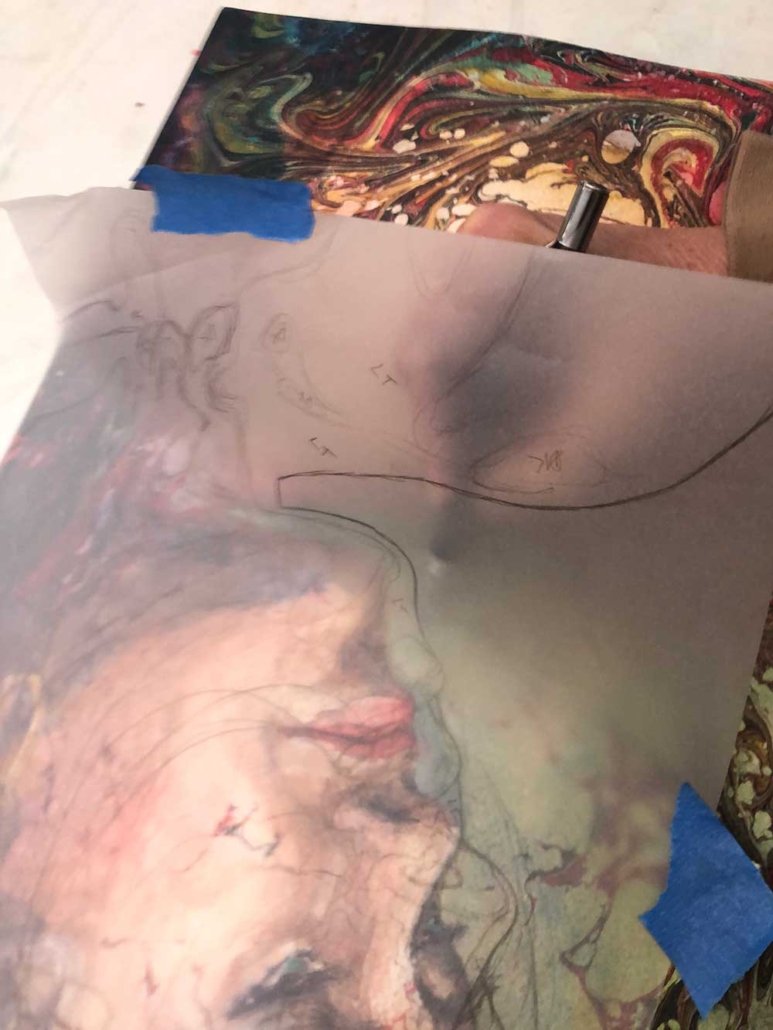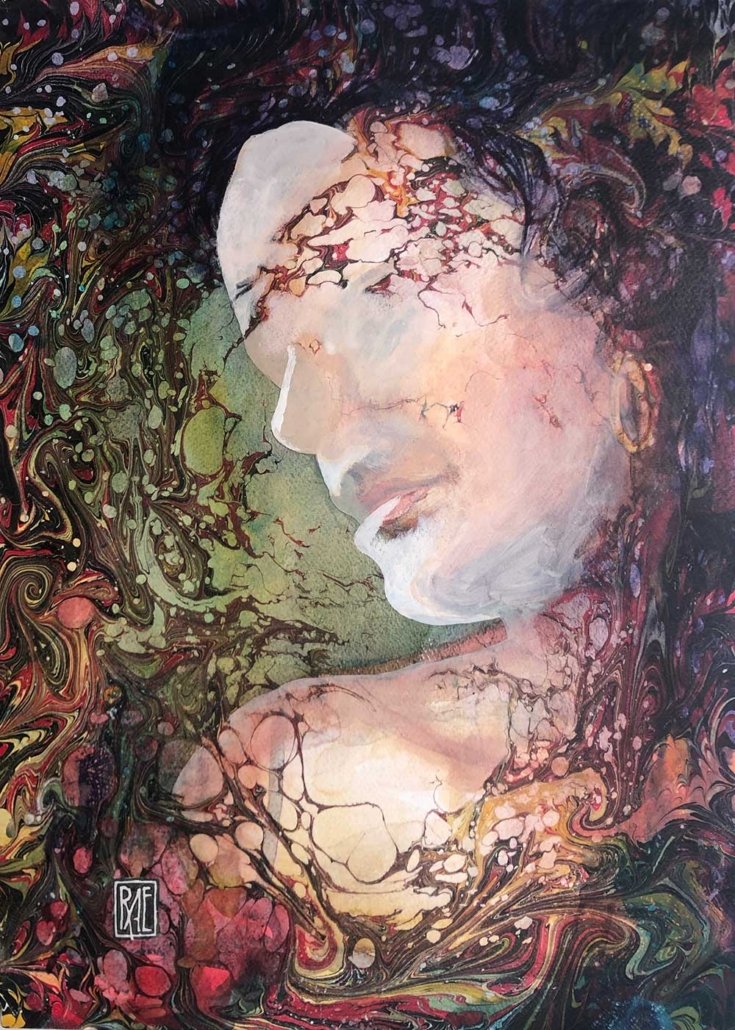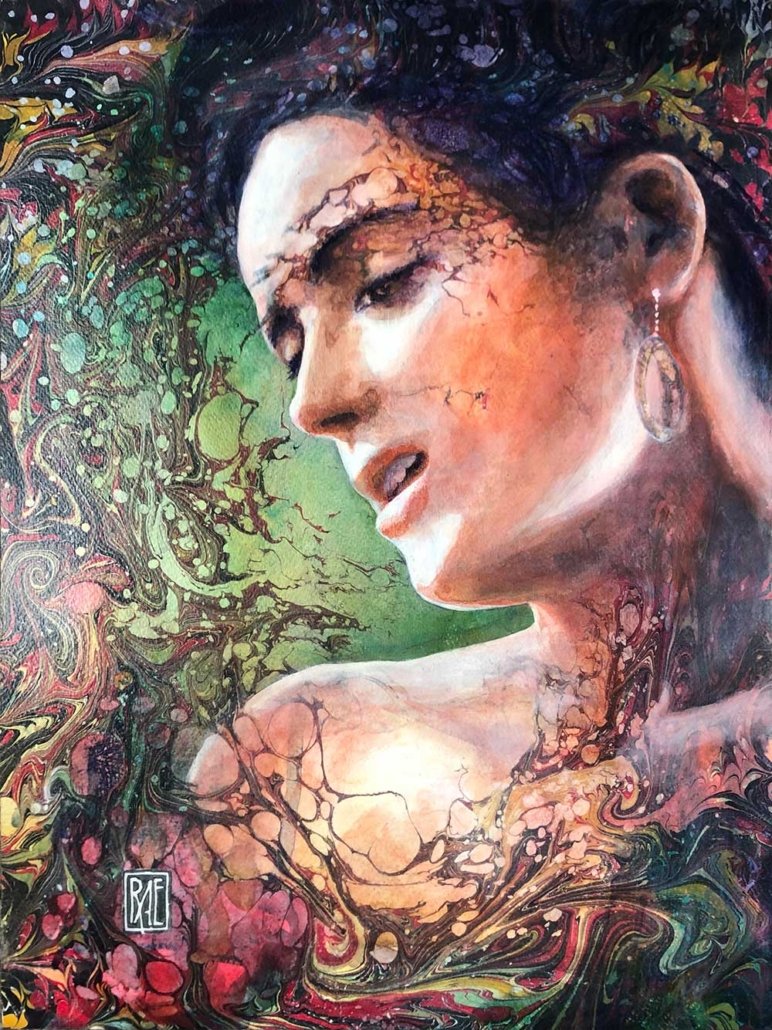FLAMENCO / DUENDE
After “fixing” the face for “State Of Wonder” I kept looking at this painting of a Flamenco Dancer (left), framed on my studio wall. The original watercolor painting was inspired by a dancer at a wedding of some friends. It was just a quick study for another portrait, which I later marbled. I was very happy with the color and movement the marbling gave the painting. The background is so compelling but the face doesn’t really communicate the intense emotion that I imagined for it. It occurred to me that it could be amazing if I just changed the face. Sometimes one thing has to die, for another to be reborn.
“Duende” on the right is my new painting. Compare the marbling patterns which remain the same on both paintings and you can see how radically different the shape and position of the new face is. Read on to see how I made the changes.
1/ PREPARING FOR THE FACE OFF
Since I’d already varnished the painting with acrylic, I first sanded very lightly to remove any texture left by brushing on the top coat.
Then I applied a coat of Daniel Smith’s Transparent watercolor Ground.
I sketched a new face on clear tracing paper.
2/ TRANSFER THE DRAWING
The next step is to transfer my drawing directly onto the painting. Notice I’ve included some of the value shapes in my sketch. I’m using a pencil placed underneath the tracing paper to draw right on the watercolor. If a regular pencil wont show up, I’ll use a white pencil for those dark areas. Notice the new outside contour doesn’t match the original face shape at all! By pressing the paper down I can get a fairly accurate duplication, and it doesn’t need to be exact.
3/ APPLYING AN OPAQUE BASE
Below I’ve used white gouache mixed with watercolor paint to create the new face contour. Think of it like applying a makeup foundation! It is necessary to cover areas that will eventually want to be lighter, but I carefully leave as much of the marbling pattern as I want to keep. Notice the new mouth shape differs completely from the old one (which you can still see in this photo), and I am pushing the new shoulder down, leaving original flesh tone above it.
In this photo I’ve added the ear and highlight which weren’t visible in the original painting, plus I’ve blocked green background color to cover the old shoulder line. A wash of dark paint subdues some of the patterning on the neck.
At this point, add another layer of spray varnish, which seals in the gouache so it cannot lift off, and when dry, a second layer of D.Smith Transparent ground which will accept new watercolor paint. Note that they recommend a 24-48 hour dry time for the ground. No one said re-creating had to be fast!
4/ DARKS, FEATURES, COLOR
Once your lighter paint is sealed in (above), you’re back to a base, almost if you’d just layered in watercolor. Then I begin adding washes of warm flesh color or dark layers over the top, following my value pattern. I also define the features of the face. When I’m satisfied, (or once the paint is saturated to the point it will lift off instead of adding) I’ll seal and add ground for a third time.
5/ THE DETAILS
Adding the finishing touches such as strands of hair, is the best part — but before I can do that, I want the painting to be “finished”. I’ve added layers of darker paint along with additional color to create further definition and subdue highlights on the neck and chest. This is a time consuming but rewarding process!
My last task, coming up with a new title! The painting was based on the exciting, seductive flamenco music and dance. In researching, I learned that Duende is a strange presence that is felt in certain surroundings, like an intimate flamenco dance where a singer will be possessed by the dark tones of the song, and the spirit will enter the mind and soul of anyone who opens up to it. To experience it is considered one of the wonders of this mystical art. The poet Federico Garcia Lorca romanticized duende saying, “Duende could only be present when one sensed that death is possible.”
“Duende” it is!
Learn about the process of marbling in my book, “The Art Of Paint Marbling”, published by Walter Foster

